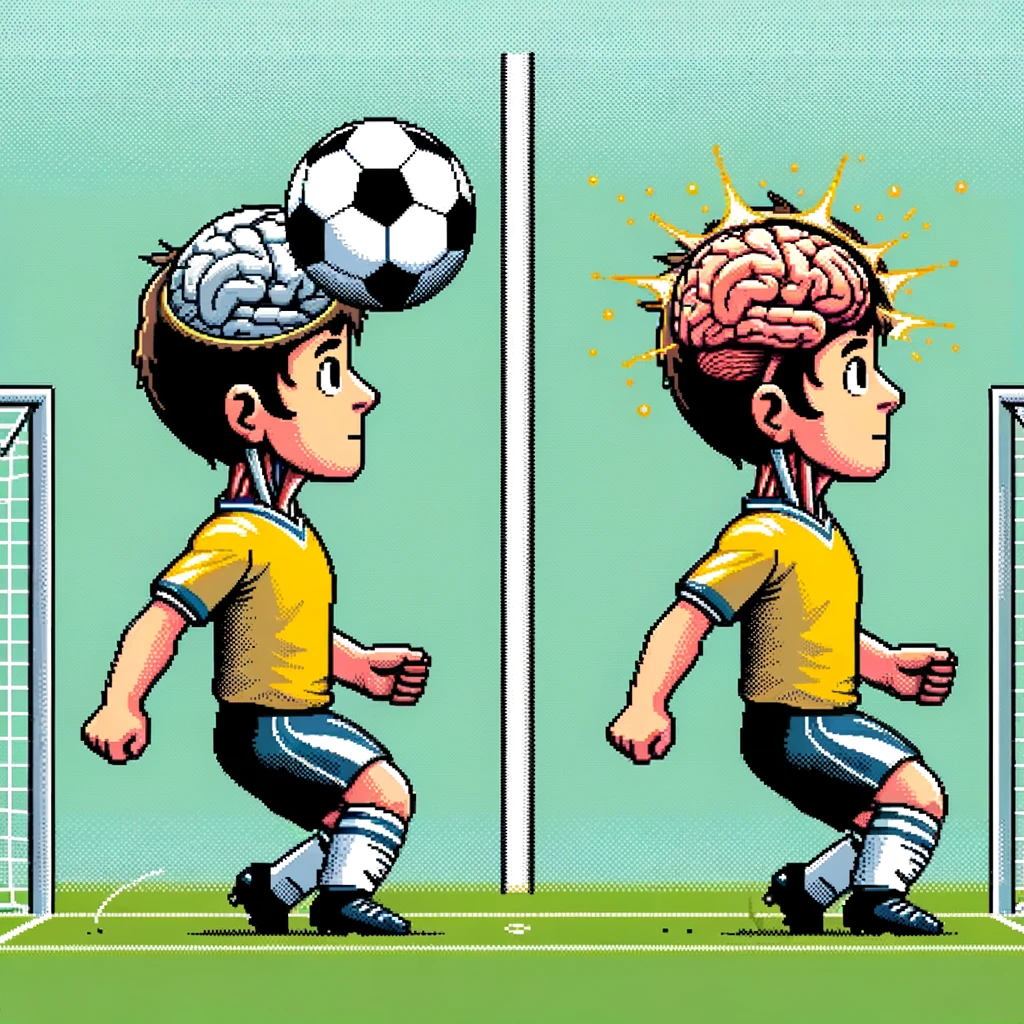
Neck Strength and Soccer Player Safety
In the world of soccer, the thrill of a perfectly executed header can be exhilarating, especially when on goal. However, recent research has highlighted potential risks associated with repeated heading, particularly regarding cognitive performance. A recent study published in PLOS ONE by Lin et al. delves into this issue, exploring whether neck strength or specific body measurements (anthropometrics) can mitigate these risks. This blog aims to break down the study’s findings and discuss their implications for soccer coaching and player development.
Understanding the Study
The study involved 380 adult amateur soccer players who were assessed for neck strength, head and neck measurements, and cognitive performance over two years. The researchers aimed to determine if greater neck strength or specific neck and head dimensions could reduce the adverse effects of repeated soccer heading on cognitive functions such as memory, attention, and psychomotor speed.
Key Findings:
- Neck Strength and Cognitive Performance: The study found that neither neck strength nor anthropometrics significantly mitigated the negative impact of soccer heading on cognitive performance. This was true for both male and female players.
- Differences Between Genders: Interestingly, while neck strength did not show a protective effect, it was observed that greater neck strength in women might actually exacerbate the negative cognitive effects of heading. This finding, however, was not robust across all analyses, suggesting the need for further research.
- Overall Impact: The study concludes that strengthening neck muscles alone is not sufficient to protect soccer players from the cognitive risks associated with repeated heading.
The Science Behind Soccer Heading
To understand the implications of these findings, it’s essential to grasp the mechanics of soccer heading and its impact on the brain. When a player heads the ball, the force is transmitted through the skull and neck, potentially causing micro-damage to brain structures over time. This repetitive impact, known as repetitive head impact (RHI), has been linked to various cognitive issues, including reduced memory performance and slower psychomotor speed.
Role of Neck Muscles:
Neck muscles play a crucial role in stabilizing the head during impacts. Strong neck muscles can potentially reduce the acceleration and movement of the head, theoretically minimizing brain injury. However, this study suggests that the relationship between neck strength and cognitive protection is not straightforward.
Implications for Soccer Coaching
Given these findings, soccer coaches and trainers should consider the following strategies to enhance player safety and performance:
- Comprehensive Training Programs: While neck strengthening exercises are beneficial, they should be part of a broader training program that includes techniques for safe heading, overall physical conditioning, and cognitive training.
- Education on Heading Techniques: Educate players on proper heading techniques to reduce the risk of injury. This includes teaching players to engage their core and neck muscles properly and to head the ball with the correct part of the forehead.
- Monitoring and Managing Heading Exposure: Coaches should monitor the frequency and intensity of heading during training and matches. Implementing limits on the number of headers during practice can help reduce the cumulative impact on players’ brains.
- Focus on Younger Players: Given that younger players are still developing, it’s crucial to minimize their exposure to repetitive heading and emphasize skill development and safe techniques.
Encouraging Further Research and Development
This study highlights the need for ongoing research into the effects of soccer heading and the development of protective measures. Researchers should explore additional factors such as the timing of muscle activation, dynamic strength, and individualized training programs tailored to each player’s biomechanics.
Engaging the Soccer Community
To foster a culture of safety and awareness, it’s essential to engage the entire soccer community, from players and coaches to parents and league organizers. Here are some ways to encourage engagement:
- Discussion Forums: Create platforms for players and coaches to discuss their experiences and share best practices for safe heading techniques.
- Workshops and Seminars: Organize educational sessions with experts in sports medicine and neuroscience to discuss the latest research and its practical applications.
- Player Feedback: Encourage players to report any symptoms or concerns related to heading, ensuring that they feel supported and taken seriously.
Conclusion
The findings from Lin et al.’s study provide valuable insights into the complexities of soccer heading and cognitive performance. While neck strength alone may not mitigate the risks, a comprehensive approach to training and education can help protect players. By prioritizing player safety and continuing to explore innovative solutions, we can ensure that soccer remains a thrilling and safe sport for all.
Be Part of Soccer’s Scientific Revolution: “Discover the unseen facets of soccer with ‘This Week in Soccer’.
Our newsletter brings you closer to the game’s strategic and scientific dimensions, with content tailored for coaches, educators, and fans alike. Utilizing advanced AI tools, we make complex soccer science accessible and engaging. Don’t just watch soccer, understand it. Subscribe to our newsletter now!”



